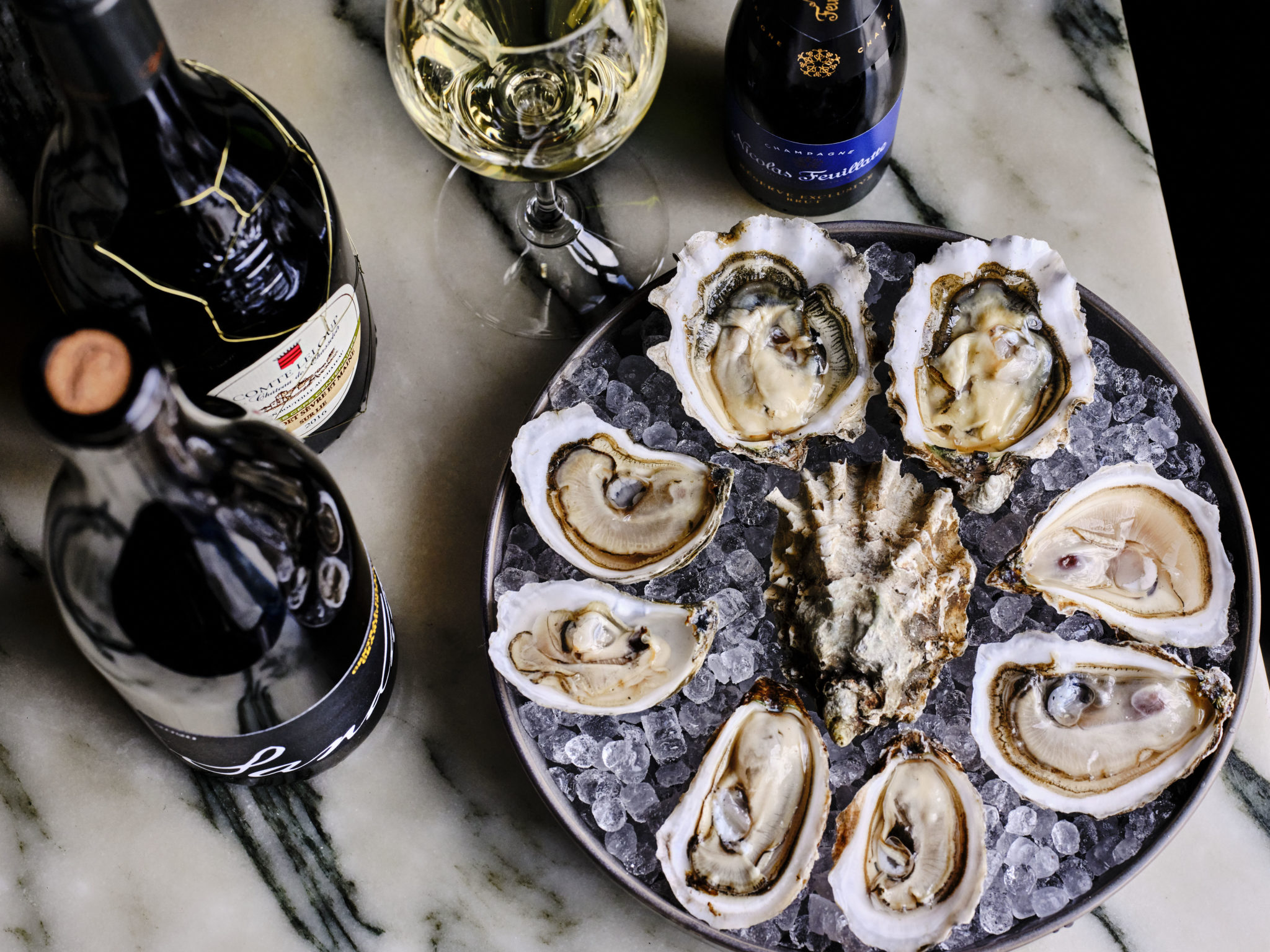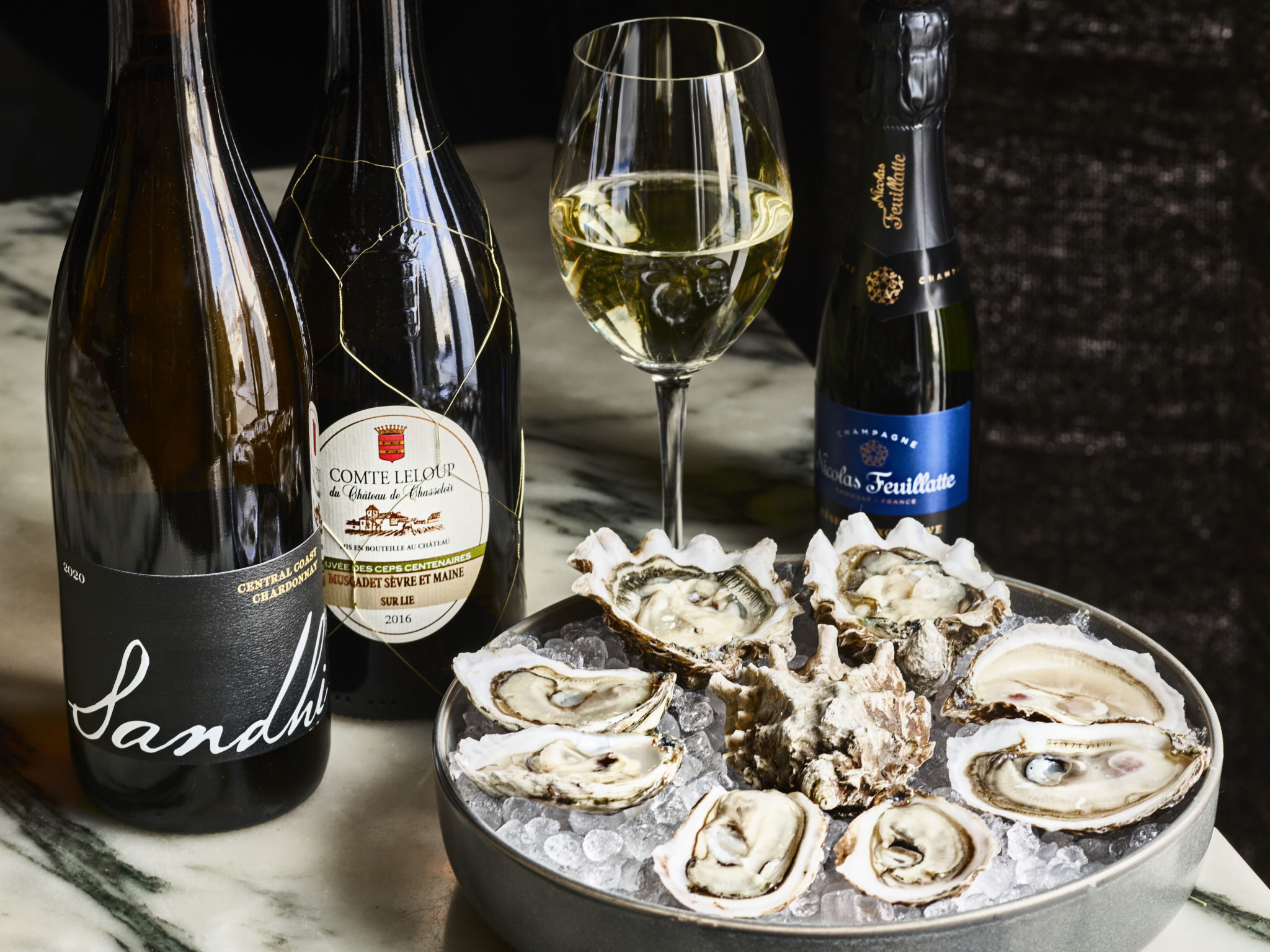Merroir and terroir: Pairing wine and oysters like a sommelier

A friend recently told me: “You are very lucky to have an opportunity to even use the word merroir…”
First things first: I don’t believe in luck. Secondly: It sounds like a high-brow conversation before 7 a.m. about oysters and why they taste the way they do, but that’s how we roll.
Terroir is of the terrain, merroir of the sea, and the two are essentially the same.
The concept of terroir is not new. It is the idea that anything grown or raised in a certain place tastes the way it does because of the unique aspects of its location. This could mean the grass eaten by cows raised for cheese or meat production, the slope of the hill in a chardonnay vineyard, the flowers surrounding an apiary, the tidal flows in oyster farms — every climatic detail is important, from wind patterns, to water temperature, to the ratio of clay to sand to silt, and so on.
Then you consider the unpredictable personality of Mother Nature and the adjustments needed to achieve consistency can be maddening.
There are dozens of oyster species around the world, and though five are viable in the U.S. market, we’ll focus on the big three: the Eastern (Crassostrea virginica), Pacific (Crassostrea gigas), and Kumamoto (Crossostrea sikamea).

The Snowflakes of Gastronomy
We often hear, “That’s an oyster wine!,” which sounds like a statement of fact. Anyone who has gone through formal wine training can relate: When comparing the aromas of a wine to apples, you have to specify the type and color of apple. Is it the skin or the flesh?
The same goes for oysters. No oyster is alike, regardless of species and coast on which it is grown. These are the snowflakes of gastronomy. Because of this, pairing wine with oysters is actually more difficult than a dish with multiple elements. Baked oysters can be more wine-friendly (even red wine!), but without a bit of cocktail sauce, mignonette, or squeeze of lemon, the naked oyster can easily be overwhelmed.
So, what’s in the glass?
East Coast Oysters
The Eastern oyster is known for salt and mineral, often austere at its core. Lean, low-alcohol wines with solid acidity, little oak, tart fruit flavors, and a thread of minerality are perfect partners. Think: Muscadet Sèvre et Maine, Chablis, or other chardonnay with little oak and a mineral core. Or try grüner veltliner with some peppery body, blanc de blancs Champagne, albariño, or Sancerre (not all sauvignon blanc is created equal).
A classic martini is also a favorite. The body of gin with the texture of good vermouth creates something of lore when paired with a briny East Coast oyster.
West Coast Oysters
Pacific Oysters are a different breed. Umami dominates with lower salinity and a garden variety of flavors like melon, cucumber, and seaweed. Try a riper version of sauvignon blanc or chardonnay, pinot noir-dominant Champagne, or ripe chenin blanc from South Africa (aka steen).
Sake is also a great Pacific oyster pairing, and fino sherry or manzanilla is a much better match than for the Eastern counterparts.
Kumamoto
This is the warm-water Japanese variety — expensive, delicious, crowd-pleasing. If you’ve never really liked oysters, this is where to start. Sweet and driven by melon flavors, these little darlings tend to work with everything paired for the West Coast but nothing too austere you would pair with Virginicas from the East.
Kumamotos are also very well-balanced, so when you see some sercial Madeira on the menu, roll the dice and order a dozen.
When All Else Fails
No one likes the same oysters and no pairing is ever perfect. But we can all agree that a cold, bubbly beverage is a great addition to spending time with friends, business associates, and loved ones. So, when a dozen oysters land at the table, you can always default to a couple old standards: dry sparkling wine, sparkling water with decent mineral and bubble content, and cold beer — crisp and refreshing as a dip in the sea.
— By Antoine Przekop, certified sommelier and sales manager for Motor City Seafood Co.




